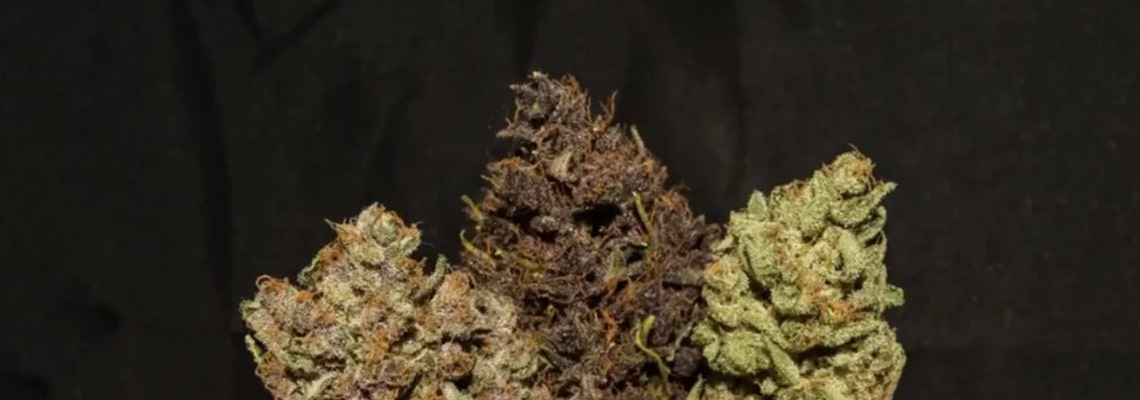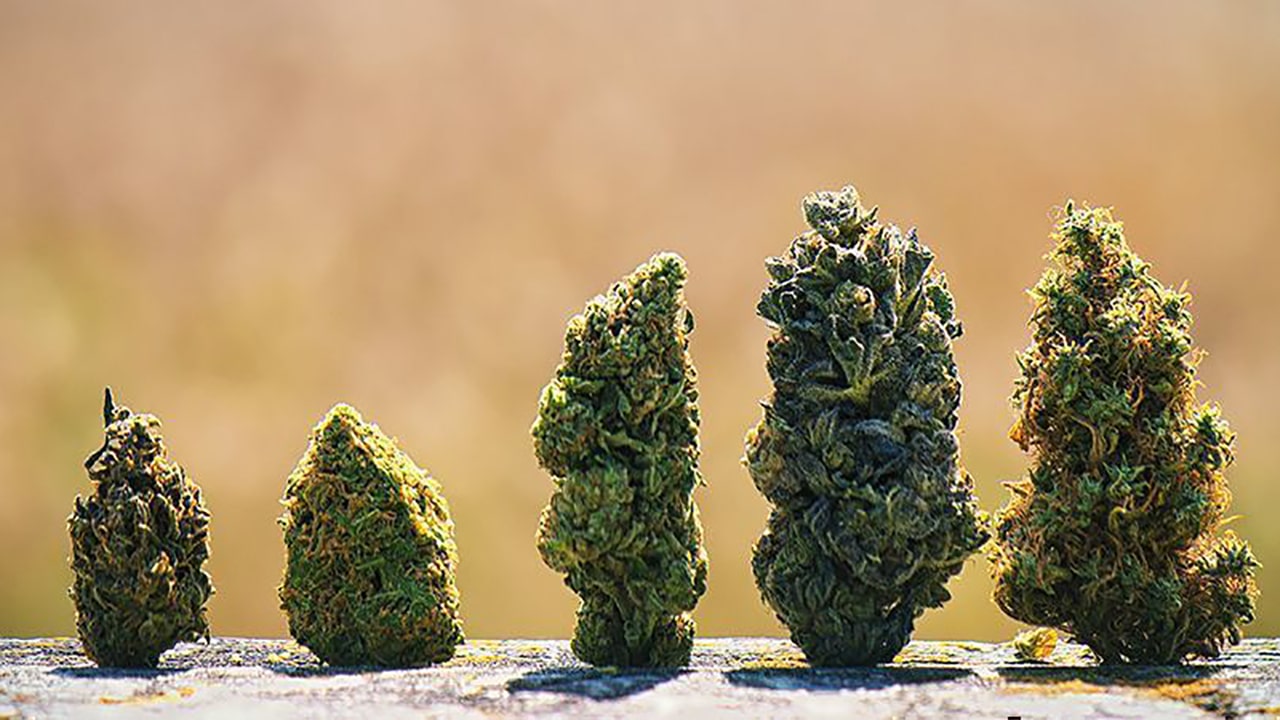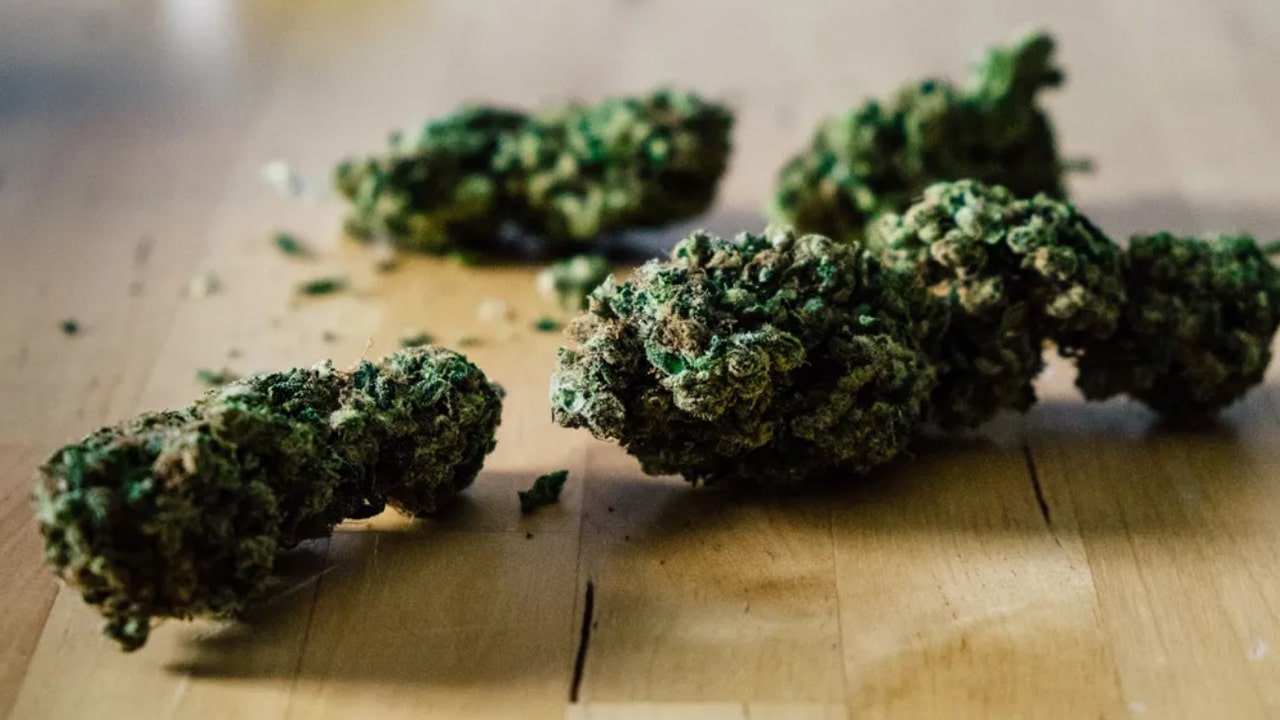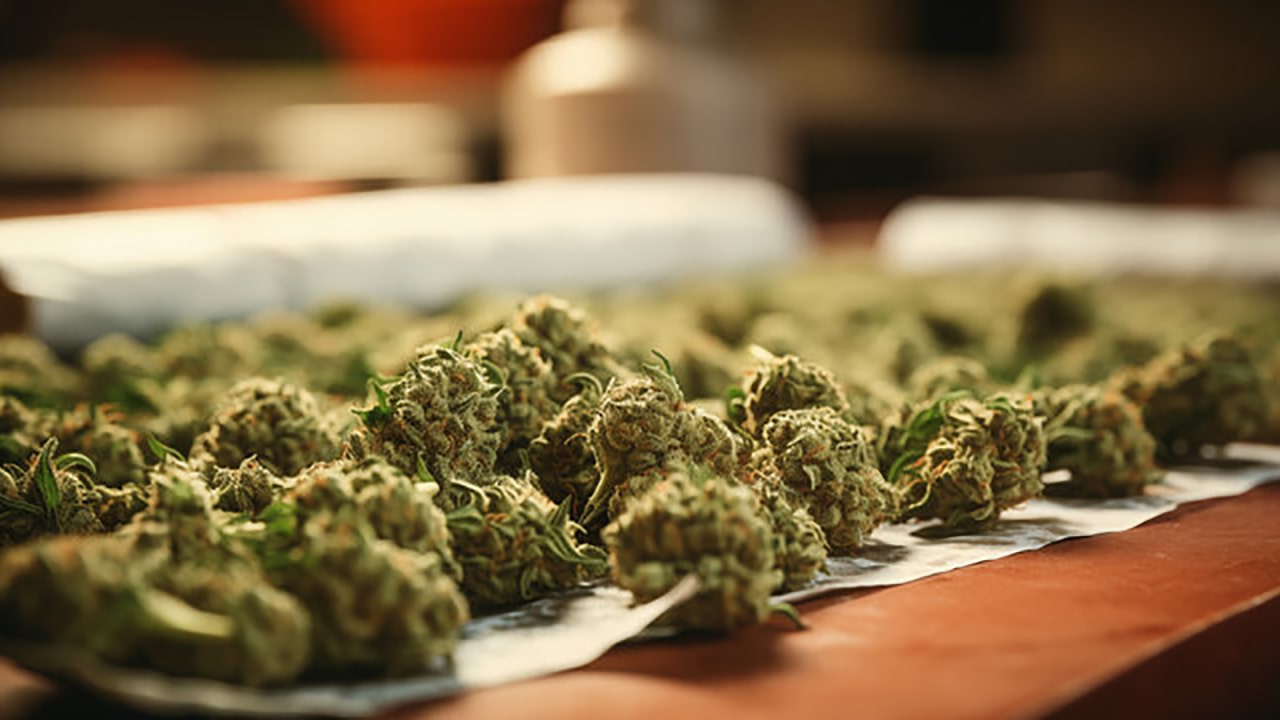There seems to be nothing in your cart.
Didn't find what you were looking for? Contact our consultant.
To save your shopping cart until your next visit, create an account or register .
Browse our Hits sales
There seems to be nothing in your cart.
Didn't find what you were looking for? Contact our consultant.
To save your shopping cart until your next visit, create an account or register .
Browse our Hits sales

Content
The color of the buds is determined by the genetic makeup of a particular cannabis variety, and each variety can have its own unique hue, which can range from bright green to deep purple or even black. The main factor affecting color is pigments such as chlorophyll, anthocyanins and carotenoids, which play a key role in the coloration of the buds.
Sativa plants tend to retain lighter green hues throughout growth, as their structure and genetics support an active photosynthetic process with high chlorophyll levels. However, some sativas may show bright red or purple hues under the right conditions.
Indica varieties are more likely to show dark and rich colors. This is due to the fact that indica is genetically inclined to synthesize anthocyanins. This is especially pronounced in cold conditions, when the cones can turn deep purple or even blue.
Autoflowering varieties, due to their mixed genetics and short life cycle, can vary in color depending on the dominant genes. If autoflowering varieties were bred from indica or sativa-indica hybrids, they may also exhibit purple or red hues at maturity.
Feminized varieties are essentially genetically stable versions with a specific set of characteristics, including cone color. Such varieties can be bred to achieve certain color qualities, such as bright red cones or deep purple hues, which makes them particularly attractive.

The color of cannabis buds can vary significantly depending on the environment, especially temperature and grovelling conditions. External factors play a key role in how and when the various pigments in the buds manifest, affecting the final hue of the plant. Temperature, humidity, and light intensity can alter the biochemical processes in the plant, causing certain colors to appear or to be muted.
One of the main reasons why cones take on bright and intense colors, especially purple or blue, is the effect of low nighttime temperatures. When temperatures drop to 15°C or lower, this causes a change in the synthesis of pigments, especially anthocyanins, which begin to dominate over chlorophyll. This change in coloration is most often seen in indica varieties and hybrids that are better adapted to cold conditions. Autoflowering varieties, which can complete the growing cycle in a shorter period, may also exhibit these changes when grooving under cool conditions, although their color response is less pronounced due to accelerated development.
At high temperatures, plants tend to retain their green hues as chlorophyll levels remain high. This is especially noticeable in sativa varieties, which prefer warmer and drier climates. In such conditions, the buds may retain their usual green hues, while other pigments such as anthocyanins may not show up at all. For example, if sativa is grown at temperatures above 25°C, it is less likely to show purple or red hues.
The quantity and quality of light also play an important role in cone coloration. Strong sunlight or intense artificial lamps can stimulate photosynthesis and keep chlorophyll levels high, which helps to maintain a green color. However, under low light conditions, pigments such as anthocyanins may become more prominent. In particularly bright conditions, light can “burn” the cones, resulting in yellowish or even brown tints, especially on the tops of the cones.
In photoperiod varieties such as indica and sativa, which depend on a day-night cycle to transition to flowering, reduced daylight hours and lower temperatures stimulate the active production of anthocyanins and other colored pigments. This is evident in feminized varieties, where changes in daylight hours towards the end of summer or early fall contribute to the activation of color changes.
Humidity can also affect pigmentation. Under conditions of higher humidity, pigments may appear brighter. For example, in humid regions, the purple and blue hues of the cones may be more intense due to changes in photosynthesis and evaporation of moisture by the plants. Conversely, in arid conditions, plants may lose some of their pigment due to stressful conditions.
Good air circulation helps maintain stable conditions for the plants, which reduces the risk of stress that can affect cone color. Poor ventilation and stagnant air can lead to fungus and mold growth, which not only negatively affects the health of the plant, but can also affect its coloration, making the buds dull and darkened.
Sativas usually develop better in warm temperatures and high light levels, which maintains their bright green color. However, under cool conditions, even sativas can develop red or purple hues, especially if they are hybrid varieties with a high anthocyanin content.
Indica, being more tolerant of low temperatures, often shows vivid color changes on cool nights. These are the varieties that show deep purple and even black buds, especially when grooving outdoors in colder regions.
Autoflowering varieties have a short life cycle and are less affected by photoperiod changes, but their pigmentation can also change with fluctuations in temperature and light. If autoflowering varieties are grown at low night temperatures, they may show the same purple and blue hues as regular photoperiod varieties.
Feminized varieties are more flexible in terms of grovelling conditions and can exhibit different colors depending on environmental conditions. However, because they are designed for a more controlled cultivation process, their color changes may be less pronounced when grooving under optimal, controlled conditions.

Nutrients and soil pH play a critical role in the development of cannabis plants and affect their appearance, including the color of the buds. Proper nutrition allows the plant to fully develop its genetic potential, including rich color shades, while deviations in nutrition or pH can lead to changes in pigmentation, often indicating stress or deficiencies.
In order for the cannabis plant to absorb nutrients, the pH of the soil must be maintained. For most cannabis varieties, the optimal pH level is 6.0-6.5 in soil and 5.5-6.0 when grown in hydroponics. At this level, plants can absorb nutrients efficiently and bring out their full color characteristics. For example, feminized varieties at ideal pH can exhibit vibrant shades of green, purple and orange depending on genetics.
Low pH: If the pH is too low (acidic), the plant will not be able to absorb important elements such as magnesium and phosphorus. This can lead to purple or blue discoloration on the buds and foliage. In some cases, these changes can be aesthetically pleasing, but it can also indicate a stressed plant.
High pH: too high a pH (alkaline environment) can block the absorption of micronutrients such as iron and zinc. This can lead to discoloration of the buds, making them pale or yellowish. This is especially noticeable in autoflowering varieties, which require precise nutritional control due to their rapid growth cycle.

Caution! Errors Seeds does not encourage you to grow cannabis and does not contribute to this in any way. Growing is prohibited by Ukrainian law. The article is of purely scientific and informational interest.